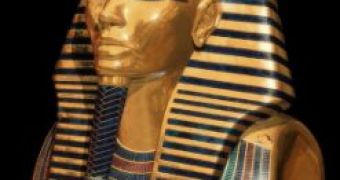Egypt is the oldest well documented civilization that triggered since ever the interest of researchers.
Starting with 1819, the western scientists started the exploration of the Valley of the Kings, near the ancient city of Thebes (modern Luxor). Thousands of mummies were discovered, but the tombs were pillaged. Tomb pillagers are mentioned even from the second millennium BC. That's why the researchers were eager to find a pristine tomb, harboring all the riches accompanying the pharaoh.
At the beginning of the XX th century, the American Th. M. Davis financed the expedition of the English archaeologist Horward Carter. Together with Lord Carnarvon and with a reputed Egyptologist, Calender, they started the researches in the necropolis of the Valley of the Kings.
They first found a room with pots and the name Tutankhamun ("the extremely beautiful life of Amun", Amun was an Egyptian god) written on the walls. It was known that Tutankhamun reigned for a short period, 1333-1325 BC, and died young, when he was only 20.
The archaeological team removed 200,000 tonnes of gravel till the 4th of November, 1922, when they found a step carved in the rock.
It was a stairway with 16 steps which led to a door sealed with Tutankhamun's cachet and that of the royal necropolis. Then a corridor followed leading to another sealed door. Once opened, Carter was the first to see the wonder: the bright gold of the statues, countless adornments and riches and the massive golden sarcophagus which harbored the mummy of the young pharaoh.
It was a great media fuss with this fantastic discovery. But Carter also saw an inscription at the entrance "Death shall touch with its wings that who disturbs the peace of the pharaoh". The first victim was Lord Carnarvon, which died few months after the discovery. A neck infection, followed by a pneumonia with a rampant evolution led to his tragic final. The press launched the idea of the "pharaoh's curse" and of his revenge over millennia.
But oddly enough, new deaths are announced. The 19th deceased person in this case was Bethell Westbury, with an unknown cause of death. The 21st victim died in mysterious conditions. The nurse that carried Lord Carnarvon also died. Lord's brother, in a moment of dementia, committed suicide. A.C. Mace, who opened together with Carter the mortuary room, also died and so did a later visitor of the tomb, Georges Benedite, curator of Louvre Museum.
Still, the only survivor remained Carter.
Scientists tried to give an explanation to this chain of mysterious events linked to the discovery of the Tutankhamun' mortuary room. They supposed irradiations, an ancient virus to which modern humans do not present immunity till they found a mold which triggers a disease called histoplasmosis, through the contact with bats' guano. The mold enters the respiratory system, invading the lungs, liver, guts and spleen and soon death follows. Today, the disease is curable after a long cure.

 14 DAY TRIAL //
14 DAY TRIAL //